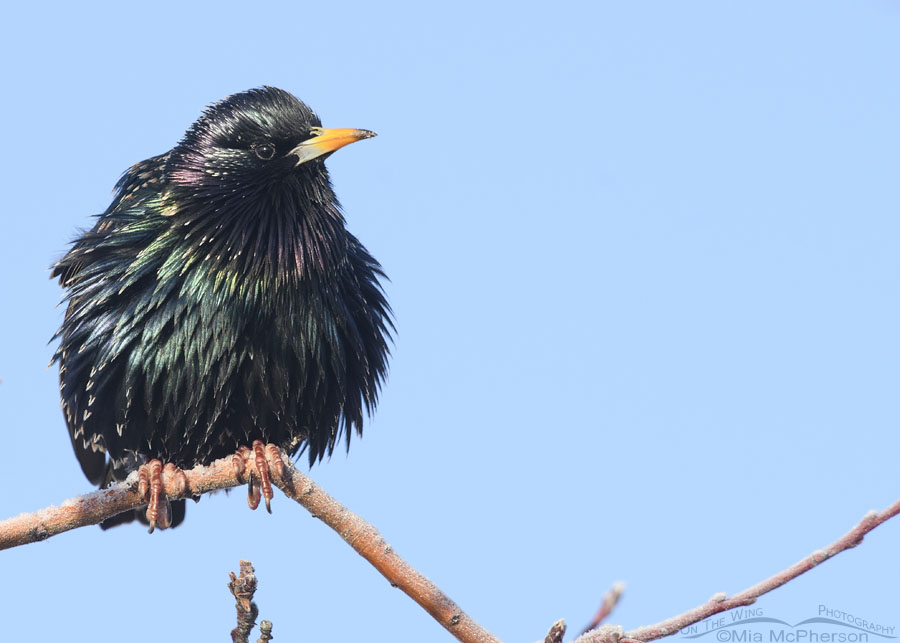Three days ago, I took this photo of a European Starling perched on top of a crabapple tree with a brilliant blue winter sky in the background at a city park.
 Perched European Starling and blue sky – Nikon D500, f7.1, 1/500, ISO 500, +2.0 EV, Nikkor 500mm VR with 1.4x TC, natural light
Perched European Starling and blue sky – Nikon D500, f7.1, 1/500, ISO 500, +2.0 EV, Nikkor 500mm VR with 1.4x TC, natural light
This is a simple photo of what I consider to be a lovely dark bird with iridescent feathers in shades of blues, greens, and purples. The specks of white stand out from the ebony colored feathers.
European Starlings are not native to North America.
These starlings have caused problems for native birds since they were introduced to this continent in the 1870’s. Today European Starlings are considered pests in North America. The reason is that they have been so very successful in adapting to this continent. They can be found in urban settings, agricultural fields, farmlands, ranches, and suburban areas. Their numbers are increasing from Alaska and Canada down to the lower 48 of United States and into Mexico.
But on the other side of the world in in some of their native habitats they are in decline for several reasons.
The loss of suitable breeding habitats, due to deforestation and urbanization, has been a major factor. Additionally, the use of pesticides in agriculture has also impacted the population of these birds. Climate change has also played a role, causing alterations to the migration patterns and food supplies of the starlings.
Conservation efforts have been put in place to try and help reverse this decline. It is important that we continue to protect and preserve the habitats of these beautiful birds in their native countries to ensure their survival for future generations.
One day the European Starlings in North America may be needed to help the birds in their native habitats if conservation efforts there aren’t successful. We have more than enough starlings to send some back over across the pond.
Life is good.
Mia
Click here to see more of my European Starling photos plus facts and information about this species.


Interesting bird; interesting history. Cool pic. Thanks Mia.
The coloring is wonderful. I’ve not seen many starlings